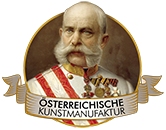Entering a gallery of Oscar Gustave Rejlander’s works is like stepping into a realm where photography and painting merge seamlessly. His images resemble carefully staged tableaux, rich in symbolism and imbued with painterly light. Rejlander was a pioneer of artistic photography in Victorian England, using his camera to tell stories that transcended mere documentation. His most famous work, “The Two Ways of Life,” is a monumental photomontage composed of more than thirty separate negatives, demonstrating not only technical mastery but also a profound engagement with the moral and philosophical questions of his era. The compositions evoke classical paintings, with figures arranged in dramatic poses and light sculpting faces and bodies in a manner reminiscent of the Old Masters.
Rejlander’s oeuvre is marked by extraordinary experimentation. He was among the first to perfect techniques such as multiple exposure and photomontage. His portraits and genre scenes display a wide range of emotions and characters, from the innocence of childhood to the contemplation of old age. Always striving to establish photography as an independent art form, he explored its expressive potential to the fullest. His images reflect the social upheavals of the nineteenth century: themes of morality, family, virtue, and vice are depicted in allegorical scenes. Rejlander collaborated closely with other artists and scientists, including Charles Darwin, for whose book “The Expression of the Emotions in Man and Animals” he produced numerous photographs. His works stand as a testament to the creative power and innovative spirit of early photography, inviting viewers to continually question the boundaries between reality and artifice.
×




.jpg)
.jpg)
.jpg)
.jpg)
.jpg)
.jpg)
.jpg)
.jpg)
.jpg)
.jpg)
.jpg)
.jpg)
.jpg)
.jpg)
.jpg)
.jpg)
.jpg)
.jpg)
.jpg)
.jpg)
.jpg)
.jpg)






